2017 Plimoth Plantation Trip
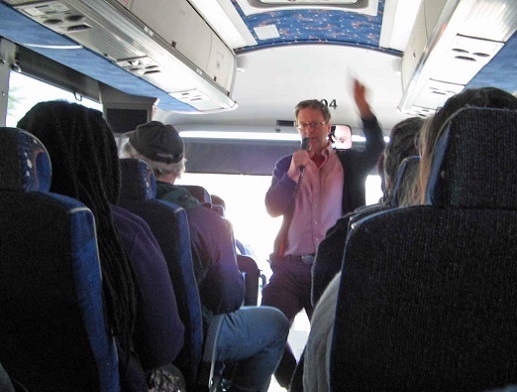
On the bus trip to Plimoth Plantation, Dr. Brian Jones energetically provides background on 17th century life in Connecticut, in part based on the 2016 excavations of the Hollister and Mason sites.
Photo by Bonnie Beatrice
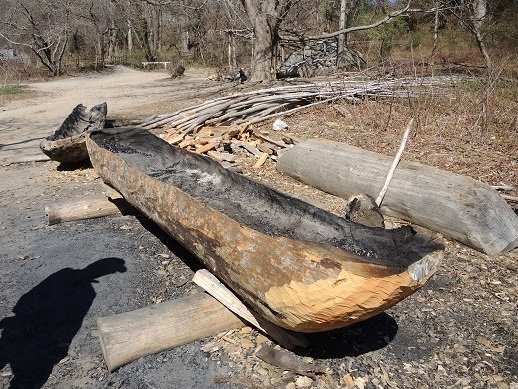
Dugout Canoes under construction. Note charring on the inner surfaces. This is the result of the burning away of the interior of the craft, which is how they were hollowed-out ... as opposed to digging it out with an adze or similar implement.
Photo by Cynthia Redman

View of the reconstructed Plimoth village on entering it.
Photo by Cynthia Redman
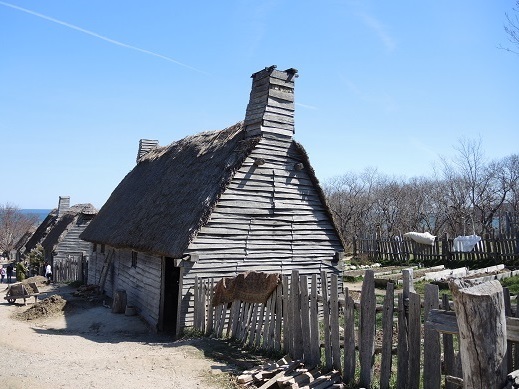
This is the house of Isaac Allerton. Its architectural design is typical of houses during the Plantation period.
Photo by Cynthia Redman
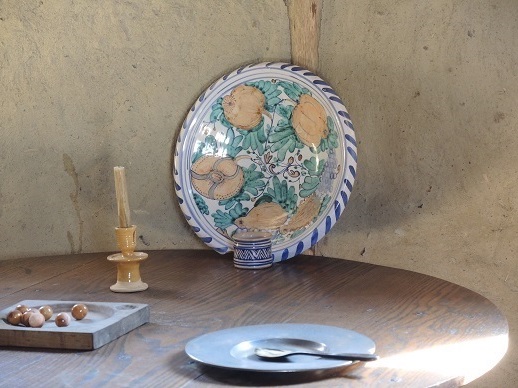
Place setting in a Plantation house. Eating utensils and dishes would have been brought over from England.
Photo by Cynthia Redman
It's possible to determine where families came from by knowing the type of pottery or utensils found at a site. Reference this slide from the 2017 FOSA Annual Meeting for an example of how to use this knowledge.
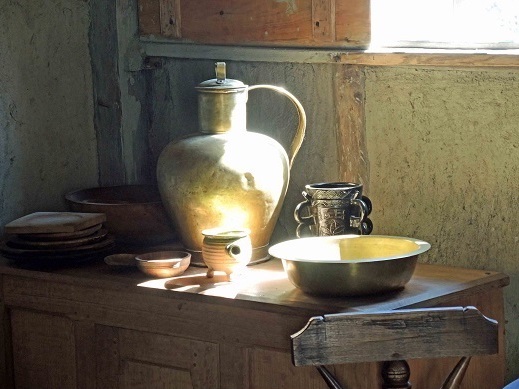
Additional housewares, all of which would also have been brought over from England.
Photo by Cynthia Redman
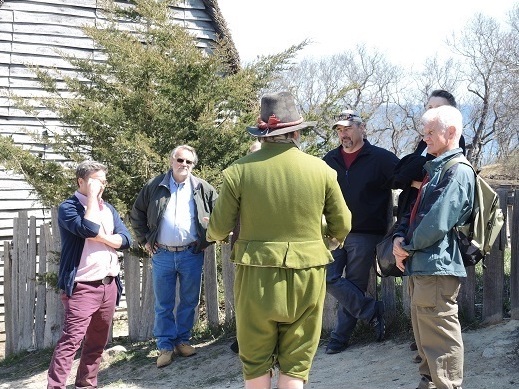
Brian Jones, Ernie Weigand, Scott Brady and Jim Trocchi discuss aspects of life with one of the Plimoth Plantation re-enactors.
Photo by Cynthia Redman
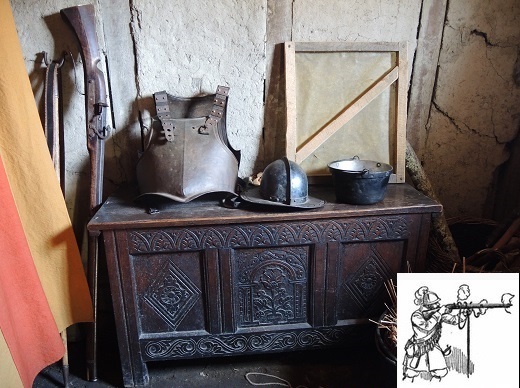
Helmet, cuirass (breastplate & backplate), matchlock and matchlock stand, typical of soldiers of the Plantation period. Insert: How the matchlock gun was used in concert with the stand (it was heavy and awkward to use otherwise).
Photo by Cynthia Redman
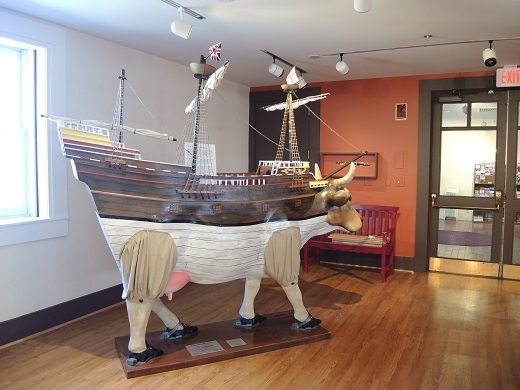
It's a "Mooflower" sculpture, winner of a local fundraiser contest!
Photo by Cynthia Redman
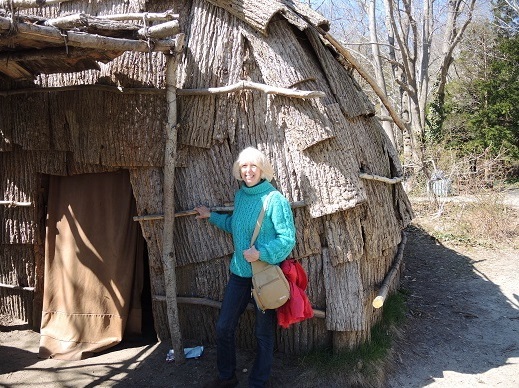
Bonnie Beatrice standing in front of a Native American dwelling of the Plantation period, technically called a "Bark Wigwam."
Photo by Cynthia Redman
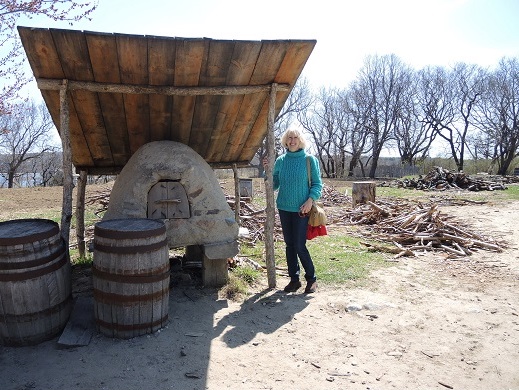
Bonnie Beatrice stands in front of a Plantation period oven.
Photo by Cynthia Redman
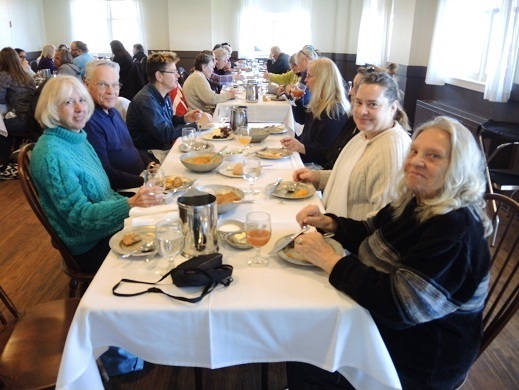
Folks we could identify "eating like Pilgrims" (which means sampling what the Pilgrims ate and how -- note the lack of forks) are:
left side: Bonnie Beatrice, Ralph Redman, unknown;
right side: Pat Walburn, Kathy Walburn, unknown
Photo by Cynthia Redman
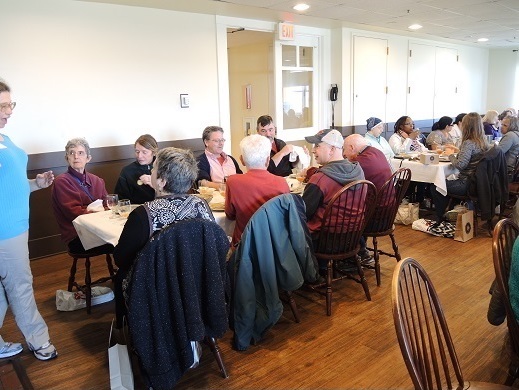
More visitors and FOSA participants "eating like Pilgrims", with various items being described by one of the Plantation staff (standing at far left):
facing out: Margaret Kessel, Lori Kessel, Brian Jones, Scott Brady;
facing away: unknown, Jim Trocchi, Dave Colberg, Nelson Meredith.
Photo by Cynthia Redman